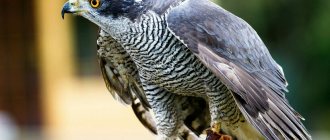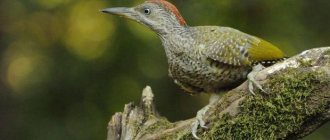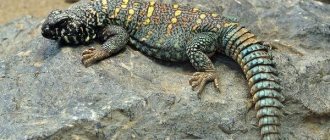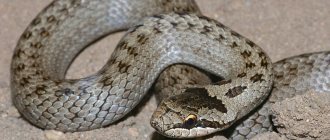Description
The common quick lizard belongs to the category of amphibians and reptiles, family of true lizards, order Squamate. Amphibians belong to the largest group of reptiles and the most widespread species in Europe and Asia.
Its color changes in different habitats: there are individuals painted in a single color. But mostly they have a pattern on their back. The amphibian reptile is very similar to a snake, but has differences:
- fast paws;
- movable eyelids;
- excellent hearing.
There are more than five thousand species of this reptile in the world. Some species tend to shed their tails when threatened.
The sand lizard is the most common species on the European continent. It has a distinctive feature - stripes are clearly visible on the back.
In the wild, there are reptiles that are green, gray, and brown. The female has a duller color, the male is very bright. The incredibly fast and dexterous reptile got its name due to its nimble behavior. Females of this species can eat their offspring.
What does it look like
Reptiles have a body size of 25 to 28 cm. The appearance is almost the same as that of tailed amphibians, only they have a more slender body.
Lizard structure:
- the head has a pointed shape, nostrils are located at the end of the muzzle;
- the neck is thick, shortened;
- the eyes are covered with eyelids. There is also a third eyelid in the form of a special nictitating membrane, which serves to moisturize the organs of vision;
- Behind the eyes there are round eardrums, which help the fast lizard to have absolute hearing;
- the tongue, as an organ of touch, is thin, long, its tip is forked. The reptile uses it to explore the surface when protruding from its mouth.
The lizard's paws are similar to frog legs with five toes without membranes, with claws that help them run quickly and dexterously. The skin on the body is dry, covered with horny scales. The muzzle and abdomen are covered with larger scales, similar to protective shields.
As they grow, they begin to molt, a process that occurs once every four or five years. Amphibians breathe only with the help of their lungs.
The color of males is varied; there are individuals of green, olive or black color. During breeding, the males' coloring becomes bright and attractive. Females are gray or brown and decorated with different patterns. Juveniles are not very bright; they are gray with three stripes on their backs.
Character and lifestyle
Agile lizards lead a daily life. The nimble reptiles can run fast, climb high, jump well, instantly change the direction of movement, and catch flies and other flying insects on the fly. For this they were called quick.
For housing they use minks that they dig themselves. They also use burrows dug by other animals. They are always close to the house and can move no more than 15 meters during a hunt. If danger overtakes them, they deftly run away.
Reptiles behave very carefully; when any kind of danger appears, they hide in a hole or climb a plant. If an overtaking predator grabs her by the tail, she throws back this part of her body and thereby saves her life.
It spends the cold season hibernating in its burrow, and with the advent of warm sunlight, it leaves its home and begins active hunting.
In the vicinity of her burrow there will always be a warm place warmed by the sun; after a hunt, she rests on a hot stone, a piece of land, on a fence or a stack of firewood. Her body is positioned in the sun in such a way as to warm it up to all the bones.
At the beginning of autumn, reptiles hide in burrows and hibernate.
What do they eat?
Lizards are omnivores, but they consume more food:
- Zhukov;
- grasshoppers;
- butterflies;
- caterpillars;
- spiders;
- locusts;
- snails;
- earthworms.
Having chosen a victim, the animal sneaks up on it unnoticed, then quickly jumps, grabs it with its claws and bites it with its teeth. They also eat vegetarian food, eat pollen and ripe fruits. They eat the fruits of cherries, cherries, grapes, viburnum, and tree leaves.
Where does it live?
The sand lizard prefers to live in a temperate continental climate. She is not particularly demanding of her habitat, but she prefers areas of dry territory, where shrubs are occasionally scattered and there are free, bright places to receive sunlight.
It is usually found on the edge of a forest, the side of a road, or the slope of a ravine or hill. It lives along railway embankments, in the ruins of old buildings, in suburban summer cottages, in gardens and parks.
An indispensable condition for habitat should be a piece of land with light soil, not overgrown with grass, where you can easily dig a hole for yourself. Reptiles are found at altitudes of up to 700m, but in southern places they live at an altitude of about 3500m above sea level.
Habitat:
- forest, forest-steppe, semi-desert zones of Europe and Asia;
- southern England, eastern France;
- Baikal region and southern Transbaikalia.
Sometimes they are found in the southern taiga, in the subtaiga forest, and in the northern forest-steppe. Populations are isolated, living at the edge of the forest, along the road. They populate along the side of the highway, on drained raised bogs, on the banks of canals, on dams and reclamation shafts.
Reproduction
The mating season of sand lizards lasts from early spring until mid-June. Males prepare a festive outfit, the shirtfront under the throat and the barrel take on an emerald green color. The female remains in her usual gray color.
During this period, the males become animated, quickly run around the surrounding area and constantly rise on their paws. When meeting with an opponent, fights begin. The winner gets the right to his chosen one.
Seeing the female, the winner begins to pursue her. If you manage to catch it, it grabs the base of the tail, pinches it with its paws and mates.
After the mating process, the female looks for a sun-warmed area and digs a hole in the loose soil to lay eggs. At the end of June, a pregnant reptile lays up to 15 large eggs in soft shells and buries them in a prepared burrow.
After 9 weeks, the cubs are born. The embryo develops inside the egg, and a fully formed young lizard emerges, up to 34 mm long and weighing up to 0.9 g.
The coloring of the young animals is dark, with almost no light specks visible on the sides. Strong males are not averse to eating small cubs.
Sexual maturity occurs in the second year of life, after the second winter. Depending on their habitat, females breed either once or twice a year.
Natural enemies
In the wild, these animals have many enemies. They are food for:
- snake;
- storks;
- cranes;
- kingfishers;
- crow;
- shrikes;
- small falcons;
- hoopoe
To protect themselves from birds of prey, reptiles:
- try to run fast;
- abruptly change direction;
- bury themselves in the sand;
- freeze;
- camouflaged on the back of tree trunks.
Predatory animals also pose a threat; lizards are eaten by foxes, bears, wolves, and martens. Sometimes even cats eat reptiles. And snakes are their main dangerous enemies.
The caught animal sharply throws off part of its tail, bites, and tries to deftly wriggle out. Their life expectancy is 5 – 6 years.
Wintering
Lizards spend the winter in their area of residence. They prepare in advance for the cold winter time and prepare a place for hibernation in warm burrows.
They choose a variety of shelters - heaps of branches, the remains of a felled tree. Summer residents often observe reptiles hibernating under a greenhouse film - for them it is warm and dry there, because the film does not allow moisture to pass through.
Like many reptiles, the fast lizard falls asleep or “freezes” during cold weather. By spring they “thaw”, or wake up.
Types, photos and names
Zoologists divided the entire variety of species of lizards into 6 information orders consisting of 37 families.
Infosquad back-shaped
These include the following families:
- true lizards living in Eurasia, Africa and the USA,
- night lizards inhabiting Cuba and Central America,
- Gerrosaurs - “residents” of the Sahara and about. Madagascar,
- skinks - live everywhere, mainly in the tropics,
- Teiids - live in South and Central America,
- belted tails - live south of the Sahara and Madagascar,
- gymnophthalmids - distributed from southern Central America to southern South America.
Infoorder Iguanaiformes
This includes 14 families, the most interesting representative of this order is the African chameleon, capable of changing its colors.
Infraorder gecko-like
Consists of 7 families. In particular, it includes the legless lizards lizards that live in Australia and some islands of Oceania.
Infraorder vermiform lizards
Consists of one family of worm-like lizards and two genera. Living in the tropical forests of Asia and Central America, these worm-like lizards resemble earthworms in appearance.
Infraorder monitor lizards
This includes the largest representatives of lizards - monitor lizards, which are also divided into several families. Monitor lizards live in many parts of Africa, Asia, Australia, as well as New Guinea and many islands of Oceania.
Lizard in human life
Lizards do not harm people. Newborn lizards actively eat harmful insects. The fast reptile is very voracious; by destroying pests in country houses or in agriculture, it benefits people. However, it also causes harm while in the areas.
Since in their natural habitat reptiles themselves are food for many individuals, moles show great interest in them. The presence of moles on the site threatens to eat vegetables and dig numerous holes.
Reptiles also eat not only harmful insects, but also earthworms, which can improve the composition and structure of the soil and saturate it with air.
How to distinguish a male from a female?
Male and female lizards look almost the same, although there are a number of signs by which the sex of the lizard can be determined.
- In some species of lizards, such as basilisks and greens
iguanas, males have a bright crest on their back.
In general, all methods for determining the sex of a lizard are not perfect, and you can find out for sure whether it is a boy or a girl only through a testosterone test of the lizard’s blood done in a professional veterinary clinic.
Sand lizard in the Red Book
The reptile is listed in the Red Book of Moscow, the Moscow region and many regions of the Russian Federation as an endangered species.
The state of the population remains stable, but there is a danger of loss of the species due to natural factors, including the overgrowing of sunny meadows with trees. The sand lizard is considered an endangered species. It is protected by law in many European countries.
Main causes of extinction
The number of reptiles is decreasing as a result of human economic activity, plowing of land, and forest fires.
Reptiles are the food of many predatory animals and birds. Animals also die on the roads under the wheels of cars.
Current population situation
At the moment, the number of lizards has not been determined. However, the estimated density of the species is:
- in a floodplain forest, occasionally flooded with high water, 24 individuals per hectare;
- in the subtaiga forest and upper swamps - 9 individuals;
- in deciduous birch-aspen forests – 6 individuals;
- in fields with sown grains - up to 2 individuals per 1 hectare.
Do you need to take protective measures?
The sand lizard species needs protection. It is necessary to carry out economic and construction work without destroying the places where reptiles live.
Monitor feral cats and dogs that eat lizards. We need educational work among schoolchildren.
Reproduction
The mating season for lizards occurs in the spring or early summer. Large lizards breed once a year, smaller ones several times per season. If several males claim one female, then the largest of them gets it. Smaller male lizards prefer not to engage in combat with a strong opponent. However, if the size of the contenders is equal, then a fight breaks out between them, during which the males violently bite each other. As a result, the female goes to the stronger winner.
Some time after fertilization, the pregnant female lays eggs; small lizards lay up to 4 eggs at a time, while larger ones can lay up to 18 eggs at a time. The sizes of the eggs also vary, for example, in the small round-toed gecko the egg size does not exceed a few millimeters in length, while in the Komodo dragon the egg length is 10 cm.
Caring mother lizards bury their clutches underground or hide them in various secluded places, caves, and burrows. The incubation period for lizard eggs lasts from 3 weeks to 1.5 months, after which period small lizards are born, which immediately begin an independent life.
Interesting facts about the animal
- The point of particular pride of reptiles is their very long tail.
- A disturbed reptile can be seen in rodent burrows.
- The sand lizard can be observed on human-cultivated lands. Uprooted and plowed lands are well suited for intensive breeding of insects, and sun-warmed soil helps create ideal living conditions and increase the number of lizards.
- In some places, reptiles have adapted to life on the side of the road.
- The reptile is becoming increasingly rare in fields treated with pesticides.
- In some lizards, after losing part of the tail, a new one grows, which bifurcates at the end, or even has three thin ends.
Difference from snakes
Those types of lizards that do not have legs are almost the same in appearance as snakes. Such lizards include, for example, the copperhead, which many take for a snake, although in fact it is a lizard that simply does not have legs. But how can one distinguish such a legless lizard from real snakes?
Range, habitats
Lizards have settled throughout the planet, except Antarctica. They live on other continents, on the Eurasian continent reaching the Arctic Circle, in that part of it where the climate is moderated by warm ocean currents.
Lizards are found at different altitudes - below sea level, for example, in Death Valley (California) and extremely high, at around 5.5 km above sea level (Himalayas). Reptiles have adapted to various habitats and landscapes - coastal shallows, semi-deserts, deserts, steppes, jungles, mountains, forests, cliffs and wet valleys.
New pet at home - what to do
Even a beginner understands that a lizard is not the most common pet, and it requires special care. What to do if such living creatures appear in the house?
- First of all, you should examine the lizard for parasites - often mites settle on their skin, which are easily detected due to their bright coloring. As a rule, such parasites do not pose a danger to people, but they cause discomfort in the lizard and can even cause its death.
- The pet should be placed in a quarantine tank for 14-21 days.
- It is recommended to carry out deworming using special products intended for reptiles.
Classification of reptiles
According to the traditional scientific classification, the class Reptiles (Reptiles) includes four modern orders:
- Testudines - Turtles;
- Crocodilia - Crocodiles;
- Rhynchocephalia - Beaked heads;
- Squamata - Scaly.
The last order (Scaly) is divided into suborders. Among them:
- Serpentes - Snakes;
- Amphisbaenia - Amphisbaenia (two-walkers);
- Lacertilia - Lizards;
- Chamaeleonia - Chameleons.
There are a lot of species of lizards.
More than 9 thousand species of animals belonging to the class of Reptiles are known in the world. More than 6 thousand of them are species classified in the suborder Lizards, which include:
- infraorder monitor lizards (Varanoidea);
- infraorder spindle-shaped (Anguimorpha);
- infraorder gecko-like (Gekkota);
- infraorder iguana (Iguania);
- infraorder skinks (Scincomorpha).
Temperature maintenance
The owner needs to take care of the microclimate - he should equip the lizard’s home with a thermometer and monitor the indicators, even at night. It is advisable to equip the tank in such a way that it has 2 zones - hot (34°-36°C) and cold (not lower than 30°C). At night, the thermometer should not fall below +21°C, otherwise the animal’s metabolic processes slow down, activity decreases, and some individuals begin to prepare for hibernation.
To maintain the temperature, it is best to use special devices that can be purchased at any pet store. The following devices are suitable for terrariums:
- lamps - they come in a variety of varieties: mirror, incandescent, halogen, etc.;
- Thermal stones are artificial minerals that, when turned on, heat the tank and are an excellent decoration for it. There is only one drawback - they can heat up to higher levels than stated;
- thermal cords - they are used to heat the lower part of the terrarium, stretching under containers or inside;
- thermal mats - used in the same way as the previous device.
Marine iguana, 12 kg
The species is also called the “ Galapagos iguana ” because of its habitat – the Galapagos Islands. The body size of an adult individual can reach 1.4 meters in length. Outwardly, it resembles a dragon from fairy tales - the color can be brown, green and even red.
Has large paws and dry skin. Spends most of its time in the sea, but can be found on rocky shores, near mango trees; it swims and dives well. They feed on seaweed. They reproduce by laying eggs on a warm sandy beach.
Video
The fast lizard and interesting facts about it
Nimble Lizard!
ALL ABOUT KEEPING A SNEAKING LIZARD! HOW TO KEEP A SNEAKY LIZARD! EXO TOP
WHAT TO DO IF THE LIZARD DOESN'T EAT? THE POOR LIZARD DOESN'T EAT!!! EXO TOP
Lobe-tailed gecko
The lobe-tailed gecko (Ptychozoon kuhli) is found in Asia, especially India, Indonesia, Southern Thailand and Singapore. They have unusual leathery growths on the sides of their bodies and webbed feet. They feed on crickets, waxworms and mealworms. These are nocturnal reptiles. Males are very territorial and difficult to cage. They camouflage themselves under the bark of trees, which helps them avoid predators. Lobe-tailed geckos live inside trees and jump from branch to branch, especially when they sense danger.
Natural enemies
Lizards, especially small and medium-sized ones, are constantly trying to be grabbed by larger animals - terrestrial and feathered predators, as well as many snakes. The passive defensive technique of many lizards is widely known, which looks like throwing away its tail, distracting the attention of enemies.
This phenomenon, possible due to the middle non-ossified portion of the caudal vertebrae (except those close to the body), is called autotomy. Subsequently, the tail is regenerated.
Each species develops its own tactics for avoiding direct collisions; for example, the long-eared roundhead, if it cannot dive for cover, takes a frightening pose. The lizard spreads its legs and tenses its body, inflates, simultaneously opening its mouth wide, whose mucous membrane becomes filled with blood and turns crimson. If the enemy does not leave, the roundhead can jump and even use its teeth.
Other lizards also stand in a threatening pose when danger approaches. Thus, Chlamydosaurus kingii (Australian frilled lizard) sharply opens its mouth, simultaneously raising a bright collar created by a wide neck fold. In this case, enemies are scared away by the effect of surprise.
Arizona snaketooth, 2kg
This type is also called “ vest ”. There are only two poisonous lizards on Earth, and the Arizona lizard is one of them. It is found in the Chihuahuan, Mojave, and Sonoran deserts of northwestern Mexico and the southwestern United States.
Most often, these lizards are dark brown in color with various spots of yellow, pink and orange. An adult reaches 50-60 centimeters in length.
Thanks to the large tail, in which the lizard stores fat reserves, the echinoderm can go without feeding for several months. This is all because they spend most of their lives in underground burrows (about 95%), only emerging to search for food.
The bite of the Arizona serpentine tooth is very poisonous, which can even lead to death.
Moloch
Moloch (Moloch horridus) is mainly found in the Australian deserts. It grows up to 20 cm and has a lifespan of 15 to 16 years. Its color is usually brown or olive. Moloch camouflages itself in cold weather, changing its skin tone to a darker one. Its body is covered with spines for protection. The lizard also has soft tissue that resembles its head. The tissues are located on the upper part of the neck and serve for protection, in which the spiny dragon hides its real head if it senses danger. Moloch has another amazing survival mechanism in the desert. Its complex skin structure, under the action of capillary force, helps to fuse water into the lizard's mouth. The main diet of the moloch consists of ants.
Lifestyle, behavior
Lizards primarily lead a terrestrial lifestyle; they can burrow into the sand (roundheads), crawl onto bushes/trees and even live there, from time to time embarking on gliding flights. Geckos (not all) and agamas easily move along steep surfaces and often inhabit rocks.
Some species with an elongated body and the absence of eyes have adapted to existence in the soil, others, for example, the sea lizard, love water, so they live on the coasts and often refresh themselves in the sea.
Some reptiles are active during daylight hours, while others (usually with a slit-like pupil) are active at dusk and at night. Some people can change their color/brightness due to the dispersion or concentration of pigment in melanophores, special skin cells.
Many lizards have retained the parietal “third eye”, inherited from their ancestors: it is not capable of perceiving form, but distinguishes between darkness and light. The eye on the crown is sensitive to ultraviolet radiation and regulates hours of sun exposure and other forms of behavior.
Contrary to popular belief that most lizards are poisonous, only two closely related reptiles from the family of lizards have this ability - the escorpion (Heloderma horridum), which lives in Mexico, and the vest (Heloderma suspectum), which inhabits the southwestern United States. All lizards molt from time to time, renewing the outer layer of skin.
Sense organs
The eyes of reptiles, depending on the species, differ in a greater or lesser degree of development: all diurnal lizards have large eyes, while burrowing species are small, degenerate and covered with scales. Many people have a movable scaly eyelid (lower), sometimes with a transparent “window” occupying a large area of the eyelid, which grows to the upper edge of the eye (which is why it sees as if through glass).
This is interesting! Some geckos, skinks and other lizards have such “glasses”, whose unblinking gaze resembles that of a snake. Reptiles with movable eyelids have a third eyelid, a nictitating membrane that looks like a transparent film that moves from side to side.
Those lizards that have openings in the external auditory canals with eardrums catch sound waves with a frequency of 400–1500 Hz . The rest, with non-working (clogged with scales or completely disappeared) auditory openings perceive sounds worse than their “eared” relatives.
A key role in the life of lizards is played by the Jacobson organ, located in the front part of the palate and consisting of 2 chambers connected to the oral cavity by a pair of holes. The Jacobson organ identifies the composition of a substance that enters the mouth or is in the air. The mediator is the protruding tongue, the tip of which the reptile moves towards the Jacobson's organ, designed to determine the proximity of food or danger. The lizard's reaction depends entirely on the verdict rendered by the Jacobson organ.
Nutrition
Most lizards are predators, feeding on all kinds of animals that they are able to grab and overpower. The main food of small and medium-sized species are insects, spiders, worms, mollusks and other invertebrates. Larger lizards eat small vertebrates - rodents, birds and their eggs, frogs, snakes, other lizards, as well as carrion. A smaller number of lizards are herbivorous and eat fruits, seeds and succulent parts of plants. However, even among herbivores, young individuals, as a rule, first feed on insects and only later begin to feed on plants, losing their predatory instincts.
Many lizards are equally willing to eat both plant and animal foods. Some species are characterized by cannibalism: adults chase and eat young individuals of the same species. Food specialization in lizards is observed relatively rarely. Thus, marine iguanas feed predominantly on one type of algae, while other lizards eat almost exclusively ants or termites, often also only one species.
As a rule, lizards slowly creep up to their prey and then grab it in a final lunge. The prey is usually eaten whole, but may be torn apart by the jaws beforehand. Like other reptiles, lizards are able to remain without food for a long time, using up nutrient reserves deposited in fat bodies located in the body cavity.
Giant monitor lizard
This huge lizard lives in Australia. Its body length is up to 2.5 meters, with a weight of 25 kg.
Giant monitor lizard
Lives in inaccessible areas, feeds on snakes, birds and small mammals (wallabies, wombats). When trying to hunt it, it attacks a person. A blow from the tail can knock a man to the ground or cripple a dog.











